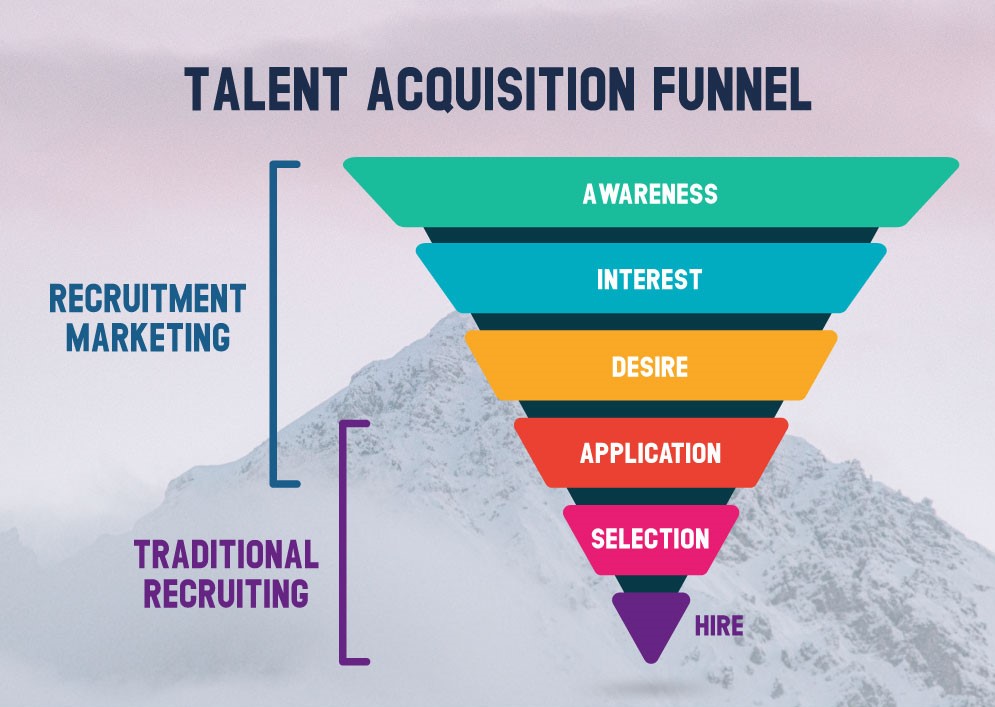Pt 2 of Building a Talent Pipeline For a Fast Recovery in a Post Pandemic World
How to Create Candidate Personas
A candidate persona is a profile representing an ideal candidate who you are trying to hire for a specific job. A great place to start is to build out candidate personas for evergreen roles that you hire for again and again, or for priority roles that are hard to fill. Creating a persona helps you think through who you’re trying to attract and what messages may resonate with them. It also will help guide your Recruitment Marketing and sourcing strategy for how best to reach and connect with candidates. Each candidate persona should define the skill sets, experience and traits that an ideal hire would possess. These profiles should also go a level deeper to identify the common pain points that candidates face in their current job, their “must-haves” and “nice-to-haves” in a job, their job search behaviours, where they spend their time online and events they attend (pre-Covid 19 of course), and how they want to communicate with your company. To create a candidate persona, you’ll need to research and document information about your target candidates. You can tap into a range of team members who can help you build out each persona profile. We recommend interviewing:
- Recruiters who regularly recruit for the role
- Hiring Managers who know who they’re looking for
- Employees who are already in those positions
- Candidates who are your ideal targets
Once the EVPs have been defined, the first step is to make them accessible to employees and potential applicants – via internal communication channels, and externally, in the career section of your website. The promises that you communicate both internally and externally should be realistic and consistent. What you write in the ‘About us’ section of your website should be consistent with what one would find in your job advertisements.
Scrutinise over and over. Clear and credible positioning on the recruitment market is only successful if promises are realistically defined and regularly given a reality check. Feedback from employee discussions, surveys, etc. should be evaluated and taken into consideration. If necessary, you should adapt your promises.
Ask yourself what channels you can select, where you would like your target group to be exposed to your brand, and how you intend to appeal to your target group so as to keep filling the top of your funnel.
Emotionalizing the Employer’s Brand
If your target group is to notice and remember your value proposition, you have to appeal to it on an emotional level. Product emotionalization is already standard in classical brand marketing, where products are charged with positive attributes through targeted imagery and language. The aim is to have both product and brand generate positive associations, and thus induce the consumer to make a purchase. In employer branding, this emotional connection is certainly just as important, however, because the decision to choose an employer is made on an emotional level
Confidence anchors are essential for a strong employer brand.
Create as many points of contact as possible. This includes initiatives like event sponsoring, exhibition booths, presentations, or also internships for future applicants. At events like these, potential employees meet a company for the first time. While there, they can examine the value proposition (EVP) and see for themselves just how true it is. In the best-case scenario, they can become positive multipliers for the employer brand.
The Employee as an Ambassador for the Employer Brand
Satisfied employees play a central role in the development of a strong and credible employer brand. They are more authentic than any advertising campaign or headhunter. When talented interns encounter frustrated employees, that has a dramatic impact on the employer image. A motivated employee has a reassuring effect on an intern. The fact is that companies do not always get to choose which employees function as brand ambassadors and which do not. Everybody talks about how things are at the office. Dissatisfaction at work therefore automatically transforms employees into negative brand ambassadors who damage the organisation’s reputation, and this is something every HR department needs to be aware of. In selecting new employees, a company needs to consider whether an applicant would be happy there long term. After all, even the most talented professionals can harm the employer’s brand if expectations and actual working conditions clash. Investments in a good work atmosphere have an impact not only in the form of greater motivation and stronger employee retention, but also contribute to the employer’s brand over the long term.
Employee Testimonials
Companies have a choice in specifically selecting testimonials from among their pool of employees, however. Employees who identify particularly strongly with the company are often happy to be its public face in the form of an employee statement. Testimonials can take a range of forms, from simple surveys to spectacular and entertaining image films in which employees play the main role.
While staged testimonials certainly do not have quite the same degree of credibility as private meetings with employees, the placement of such testimonials can be an effective way to enhance the employer’s image. Even the selection of employees for trade fair stands and public events has a testimonial character and should therefore be thought through carefully. Choosing and encouraging employees for testimonials is one of many ways to promote employee retention.
In the phase before the hire is made, the company can spruce up its image. Many job seekers consider the job search and application phases to be stressful and annoying. With the right candidate experience, organisations can distinguish themselves in a positive way, though. The term “candidate experience” comprises all of the perceptions and experiences a candidate collects during the contact and application phases with a potential employer. This experience phase is becoming more meaningful within the context of a unified employer branding strategy. These days, every detail counts in the competition for talent on the recruitment market, from the recruiting video to the handshake at the interview. Today, talented young candidates choose their employer, not the other way around. The decisive impression a company makes happens long before the job actually starts. Aside from the value proposition a company gives the candidate about the hiring, there are many smaller moments an applicant goes through in their application phase that mean a lot.

Next Week: Managing the Candidate Experience
Missed Pt 1? Click here
With thanks to Personio.


